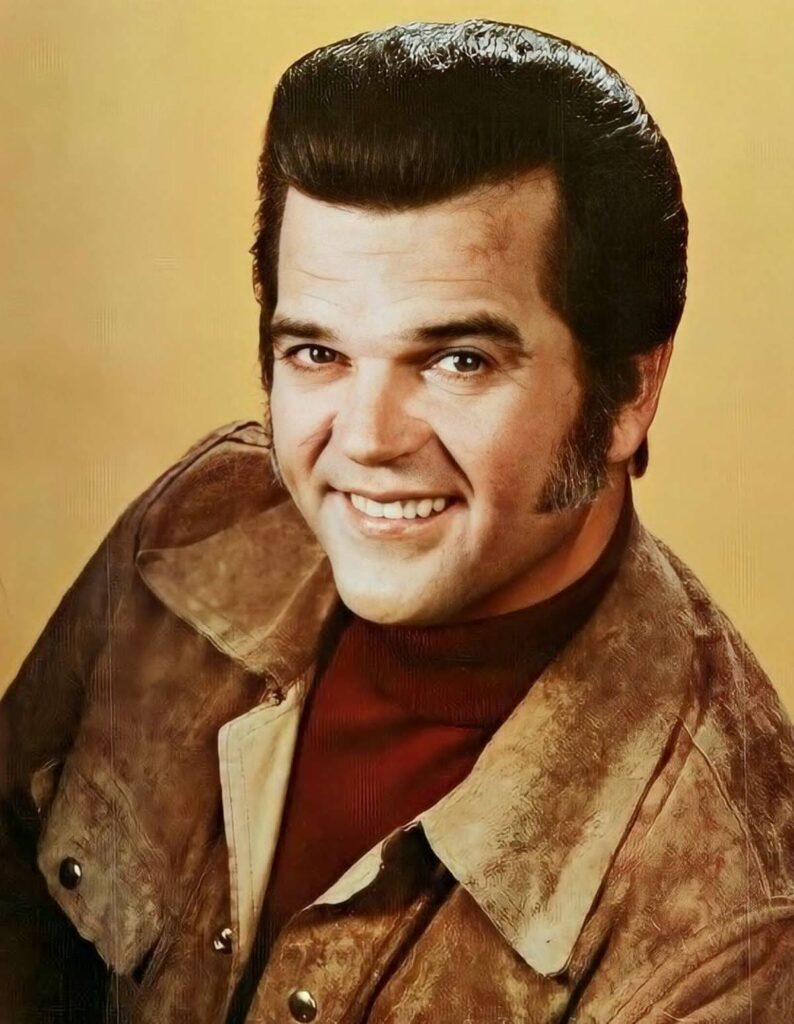
The raw, aching confession of a man turning to the bottle for a brief, blurred moment of peace from a love he can’t forget.
Ah, to be an older fan, looking back through the years at the soundtrack of a life lived. The melodies that stick with you aren’t always the flashy, chart-topping behemoths; often, they are the quiet, gut-punching anthems that understood your pain when no one else seemed to. Such a song is “There Stands The Glass,” a honky-tonk masterpiece that, despite its massive popularity for an earlier artist, was a deep-cut gem for the legendary Conway Twitty, a man whose baritone voice could make the simple act of breathing sound like a heartbreak.
The song’s initial success belongs to the great Webb Pierce, who took the original 1953 recording all the way to Number 1 on the Billboard Country & Western Best Sellers chart, where it stayed for an impressive 12 weeks. It was a career-defining hit, establishing the song as a cornerstone of the ’50s country drinking-song canon. The song was penned by a trio of writers—Mary Jean Shurtz, Russ Hull, and Audrey Greisham—who tapped into a universal, age-old misery with unflinching directness.
The version by Conway Twitty, however, arrived over a decade later in 1966, long after he had transitioned from his early rock and roll days (“It’s Only Make Believe”) back to his true country roots. Released on his album “Look Into My Teardrops,” the song was not a charting single for Twitty himself—by 1966, the airwaves were crowded, and Webb Pierce‘s shadow on the tune was long. Yet, Twitty‘s rendition is often the one that modern and nostalgic audiences recall with the most reverence, a testament to his unique ability to breathe new, intensely personal life into a standard. His version cemented the song’s place in his formidable catalog, demonstrating his commitment to the raw, hard-core country that would define his later career as “The High Priest of Country Music.”
The meaning of “There Stands The Glass” is as clear as the amber liquid it describes: it is the unapologetic narrative of a man seeking temporary, self-medicated relief from the agony of lost love. The famous opening lines—”There stands the glass / That will ease all my pain / It will settle my brain / It’s my first one today”—set a scene of stark, almost desperate sobriety on the brink of collapse. This is not a man celebrating; this is a man about to perform a ritual of self-numbing. He acknowledges the false promise of the drink, knowing that it won’t truly bring his lover back, but merely dull the “memory so keen.” The glass, a simple object, becomes a central, almost anthropomorphic antagonist in his lonely drama, an instrument of forgetfulness.
The original story of the song is rooted in pure honky-tonk realism, a gritty contrast to the polished Nashville Sound emerging at the time. Twitty’s version, produced by the great Owen Bradley, manages to keep that raw edge while injecting the trademark emotional vulnerability that characterized his finest country work. His vocal delivery is heavier, his lower register adding a reflective sorrow that goes beyond simple pity. For older readers who remember the smoke-filled bars, the neon signs, and the clinking of bottles—the true atmosphere of the classic country song—Twitty‘s take evokes a particularly potent wave of nostalgia. It’s the sound of a man who has genuinely been there, sitting on that bar stool, staring at the glass, knowing the trouble it will bring, but needing that brief, blurred respite from the relentless truth of a broken heart. It stands as one of the essential country records—a dark, beautiful masterpiece about coping, or failing to cope, with the inescapable ache of being alone.